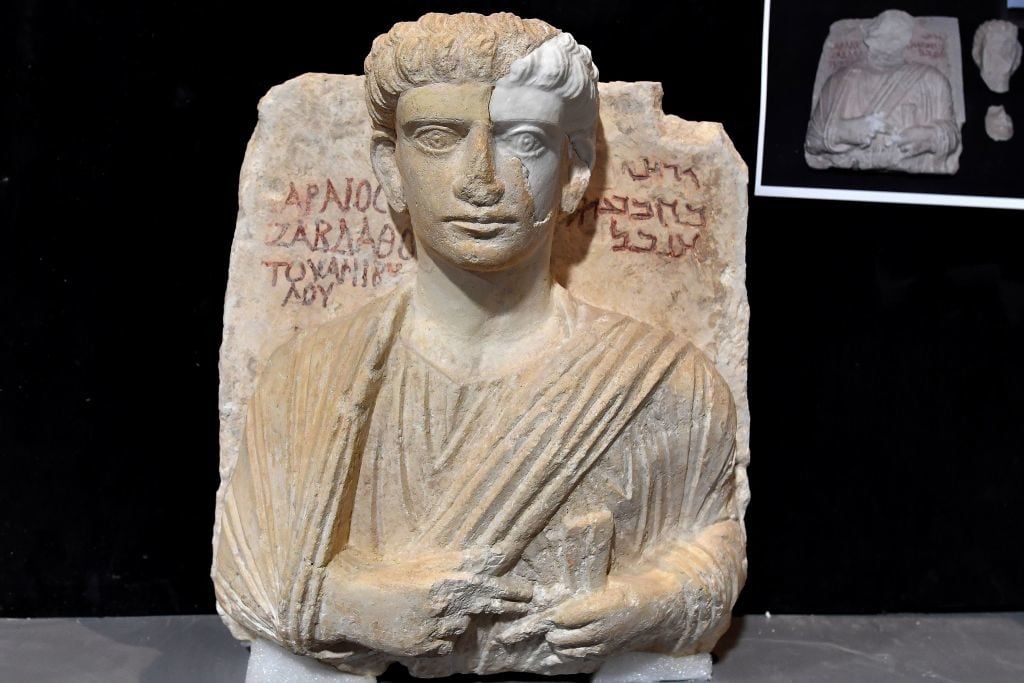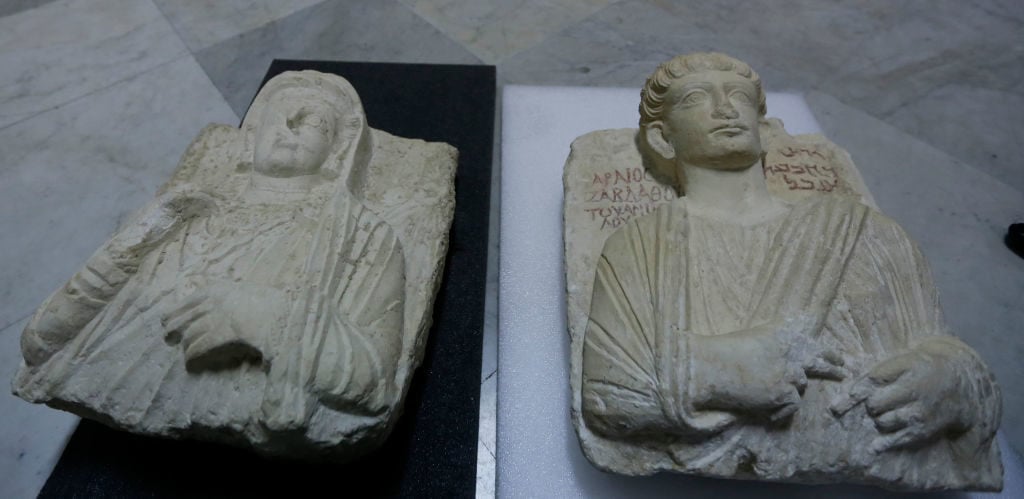Art World
Two Busts Destroyed by ISIS Return to Syria After Restoration in Italy
Restorers used a novel method involving 3D printing and powerful magnets.

Restorers used a novel method involving 3D printing and powerful magnets.

Amah-Rose Abrams

Two third-century busts from Palmyra that were partially destroyed by ISIS have been returned to Syria, after being restored in Italy using 3D printing technology.
The two works, of a man and a woman, were damaged with blows by a hammer during the time when ISIS controlled the city of Palmyra in 2015.
Syrian antiquities director Maamun Abdul Karim sees this as the first real move by the international community to return looted items to Syria. Since conflict broke out in the region in 2011, Syria’s rich wealth of valuable antiquities have entered the black market on a mass scale.
“This is part of cultural diplomacy, which does not prevent coordination among the people of different countries to combat extremism and barbarism,” Abdul Karim told AFP.
“In the end, Syrian heritage is human heritage,” he added.

The restored busts on view at the National Museum in Damascus. Photo LOUAI BESHARA/AFP/Getty Images
The restoration of the busts is being seen as a tribute to an archaologist, Khaled al-As’ad, who was gruesomely murdered by ISIS after refusing to reveal the location of hidden, valuable antiquities.
“Italy wanted to maintain the request of the martyr of Palmyra, Khaled al-As’ad, who refused to collaborate with terrorists,” Francesco Rutelli, former Italian culture minister and head of the cultural heritage organization Meeting of Civilizations Association, told CNN.
A team of five restorers worked for a month to mend the busts, giving special attention to the faces. In one instance the face had been destroyed, but was recreated using a synthetic nylon powder and a 3D printer, and attached to the bust using powerful magnets. This is the first time such a technique has been used in a restoration.
“…which makes it completely removable, in line with the principle that all restoration work must be completely reversible”, restorer Antonio Iaccarino told AFP.
“What the Islamic State has destroyed, we have rebuilt. Through culture, we also wage an ideological battle,” he added.
The busts, which were on view at a UNESCO-sponsored exhibition at the Coliseum in Rome, are currently in an undisclosed location in Syria, and will return to Damascus when the city is deemed safe.